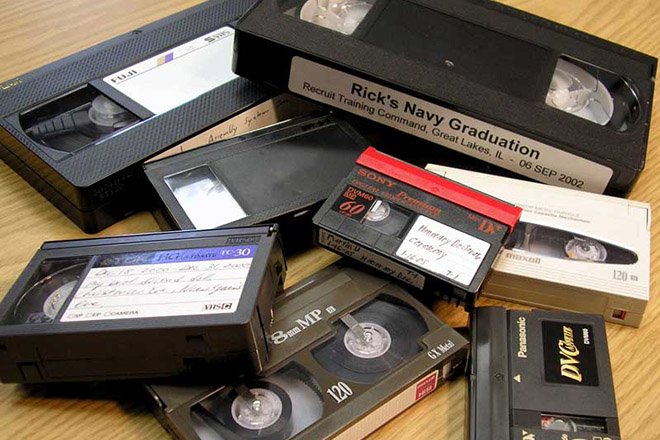The Rise of Hi-Res Audio: Trends and Innovations in Sound Technology

In the fast-paced world of digital music, the demand for better sound quality has given rise to a new era of innovation—Hi-Res Audio. Over the past decade, this technology has transformed how we experience sound, offering listeners an unparalleled level of clarity and depth. As consumers seek more immersive and authentic experiences, Hi-Res Audio has become a defining trend in the audio industry, influencing everything from recording studios to streaming services and everyday consumer devices.
Understanding Hi-Res Audio
Hi-Res Audio, short for High-Resolution Audio, refers to music files with higher sampling rates and bit depth than the standard CD quality (16-bit/44.1 kHz). Typically, Hi-Res Audio formats start at 24-bit/96 kHz or even higher, capturing more detail from the original recording. This allows listeners to experience sound closer to what the artist and producer intended in the studio. Unlike compressed formats such as MP3 or AAC, which discard audio data to save space, Hi-Res Audio preserves the full spectrum of sound frequencies, ensuring a richer and more natural listening experience.
The Evolution of Sound Quality
The journey toward Hi-Res Audio has been long and dynamic. From the analog warmth of vinyl records to the crisp precision of digital CDs, each generation of music technology has aimed to improve fidelity and accessibility. The introduction of MP3s in the 1990s revolutionized convenience, enabling people to carry thousands of songs in their pockets—but this came at the expense of audio quality. As compression algorithms removed subtle nuances, audiophiles began to crave a return to authenticity. This desire paved the way for Hi-Res Audio, which combines the convenience of digital formats with the quality of studio-grade sound.
The Science Behind Hi-Res Audio
At its core, Hi-Res Audio is about resolution—how much information is captured and reproduced in a sound file. Sampling rate measures how many times per second an analog sound wave is sampled, while bit depth determines the precision of each sample. The higher these numbers, the greater the detail in the audio. For instance, a 24-bit/192 kHz Hi-Res Audio file can reproduce frequencies beyond the limits of human hearing, ensuring that even the subtlest overtones and spatial cues are preserved. This results in a more natural, three-dimensional soundstage where instruments and vocals feel lifelike and immersive.
The Role of Streaming Platforms
In the past, Hi-Res Audio was limited to audiophiles who invested in specialized equipment and downloaded massive audio files. However, the digital landscape has evolved dramatically. Today, major streaming platforms such as Tidal, Amazon Music HD, Apple Music, and Qobuz offer Hi-Res Audio streaming options. These services leverage advanced codecs like FLAC, ALAC, and MQA to deliver superior sound quality while optimizing bandwidth. The growing availability of high-speed internet and 5G networks has made streaming Hi-Res Audio more practical and accessible to everyday listeners around the world.
Hardware Innovations Driving Hi-Res Audio
The rise of Hi-Res Audio has also spurred innovation in hardware. Modern smartphones, headphones, and portable DACs (Digital-to-Analog Converters) now support high-resolution playback, bringing studio-quality sound to the palm of your hand. Brands like Sony, Astell&Kern, FiiO, and Sennheiser have embraced Hi-Res Audio certification, ensuring that their devices meet rigorous performance standards. Additionally, the introduction of lossless Bluetooth codecs such as LDAC, aptX HD, and LHDC has made wireless Hi-Res Audio streaming a reality, bridging the gap between convenience and quality.
Hi-Res Audio in the Studio and Beyond
Hi-Res Audio is not only revolutionizing how we listen but also how music is produced. Recording studios now capture sound at ultra-high resolutions to preserve every nuance of an artist’s performance. Producers and engineers benefit from the increased headroom and dynamic range, enabling more precise mixing and mastering. Moreover, Hi-Res Audio formats allow for future-proofing—ensuring that music can adapt to evolving playback technologies without loss of quality. As immersive formats like Dolby Atmos and Sony 360 Reality Audio gain traction, Hi-Res Audio plays a vital role in delivering multidimensional sound experiences.
The Audiophile Community and Consumer Awareness
While Hi-Res Audio has long been a favorite among audiophiles, its appeal is rapidly expanding. As consumers become more educated about sound quality, they are beginning to recognize the difference between standard and high-resolution formats. The growing popularity of premium headphones, turntables, and sound systems reflects this shift toward quality-driven listening. In addition, social media influencers and YouTube reviewers have helped demystify Hi-Res Audio by comparing formats and showcasing its benefits in relatable terms. The result is a new generation of listeners who value fidelity over mere convenience.
Challenges in Adopting Hi-Res Audio
Despite its advantages, Hi-Res Audio faces several challenges. File sizes remain significantly larger than compressed formats, requiring more storage and bandwidth. Not all consumers possess the necessary playback equipment to fully appreciate the difference in quality. Furthermore, licensing and format fragmentation can create confusion—different platforms may use varying standards, complicating compatibility. However, as technology advances and costs decline, these barriers are gradually diminishing. The trend toward universal Hi-Res Audio support suggests that it will soon become a mainstream standard rather than a niche luxury.
The Environmental and Economic Impact
The expansion of Hi-Res Audio also has implications beyond sound quality. As the demand for better equipment grows, manufacturers are focusing on sustainable materials and energy-efficient designs. Digital distribution reduces the carbon footprint associated with physical media, while improved compression algorithms minimize data usage without sacrificing quality. Economically, the Hi-Res Audio market has spurred growth across multiple sectors, from consumer electronics to professional audio production. Industry analysts predict continued expansion as more artists, platforms, and brands embrace this technology.
The Future of Hi-Res Audio
Looking ahead, the future of Hi-Res Audio is both promising and transformative. Advances in artificial intelligence and machine learning are enhancing audio upscaling technologies, allowing even standard recordings to be remastered into higher resolutions. Meanwhile, the integration of Hi-Res Audio into emerging fields like virtual reality, gaming, and automotive sound systems promises to redefine immersion. The ongoing collaboration between hardware manufacturers, streaming services, and content creators ensures that Hi-Res Audio will remain at the forefront of audio innovation.
Conclusion
The rise of Hi-Res Audio marks a turning point in how we experience sound. It represents a shift from convenience-driven consumption to quality-centered appreciation, allowing listeners to connect with music on a deeper, more emotional level. As innovations continue to refine how we record, transmit, and reproduce sound, Hi-Res Audio stands as a testament to the relentless pursuit of perfection in audio technology. From audiophiles to casual listeners, the world is tuning in to a new standard of excellence—one that transforms every note, every beat, and every breath into an extraordinary sonic experience.







